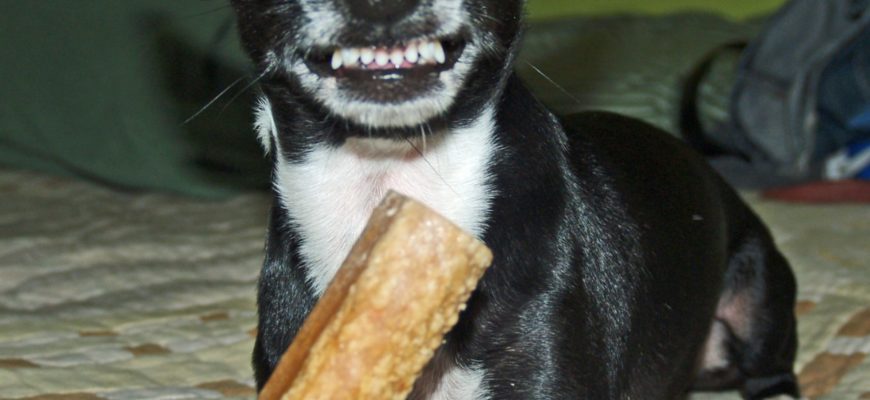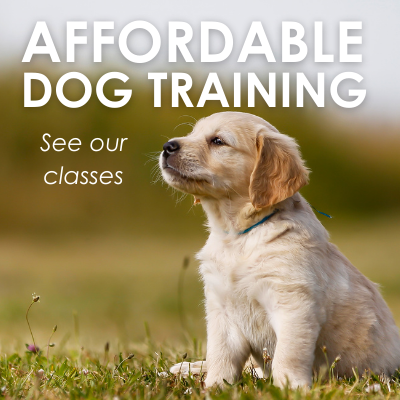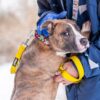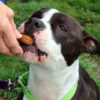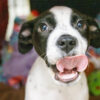What is Resource Guarding?
Dogs that become aggressive or possessive of an object or space are said to be resource guarding. By using threatening displays or aggression to get an approaching person or dog to move away, the dog is able to maintain possession of the resource that they value. While this behavior can be useful for wild or feral animals that have to fend for themselves, it can be problematic in a family pet. Fortunately, there are ways to modify it!
What types of “resources” do dogs often guard?
Anything the dog values can be something they will potentially guard. Most common objects include:
- Food
- Bowls
- Bones, rawhides, Kong®, and other chew objects
- Toys
- Favorite locations and resting areas (beds, furniture, crates, etc.)
- A favorite person/family member
What does resource guarding look like?
It is important to be familiar with the dog’s body language when he might be guarding something. Warning signs to look for include:
- Lowering head or body over the object
- Turning head and/or body away and placing body between object and approaching person
- Trying to move away with object
- Increasing speed of eating/chewing
- Freezing
- Hard stare
- Growling
- Lip curl/showing teeth
- Barking
- Lunging
- Snapping*
- Biting*
*NOTE: If your dog is exhibiting these behaviors, we highly recommend consulting with an experienced positive-reinforcement-based trainer to help with a structured training and management plan.
Management
Until you can work through a training plan to change the guarding, it is important to use management to keep everyone safe and to prevent the dog from practicing the behavior.
For dogs that guard their food, feed them set meals a couple times a day, rather than having a bowl of food available throughout the day. When the bowl is empty (and the dog is not present) pick the bowl up. While the dog is eating, prevent others (especially children) from approaching by feeding inside a crate, a separate room, or behind a baby gate.
For dogs that guard objects, pick up high-value items that might be guarded. You may begin gradually allowing them to have these things again once you have worked through a training plan.
For dogs that guard locations, restrict access to the most guarded places, and do not approach the dog when he is settled and resting.
Supervise children closely around dogs with known resource guarding behaviors, and do not ever allow them to approach any dog who is resting, to bother them while they are eating or chewing on a toy/bone, or to reach for and try to take an object from the dog.
Training
Dogs guard because they are worried that our approach means something good will be taken away. Instead, we want them to see that our approach predicts even BETTER things happening. During these exercises, you will be rewarding the dog as you gradually approach them and they remain calm. Choose a very special food reward for these exercises – hot dogs, cheese, chicken, etc.
You will begin approaching your dog while they are with their resource (food bowl, toy, etc.), but stop as soon as he notices, but IS NOT yet exhibiting any of the body language listed above. Toss treats over to him, then walk away again. Repeat multiple times, stopping at the same place before the dog starts guarding.
If after multiple passes, your dog is remaining calm, or (ideally) looking happily towards you as you approach in anticipation of the treats, then move slightly closer the next time, and do several repetitions at that distance.
Over the course of multiple sessions, very gradually pass closer and closer to the dog. If at any point your dog begins to show any of the body language associated with guarding, STOP. Resume later, starting from a further distance again.
When your dog is comfortable with you being around him and the resource, you can begin asking them to trade the object for a treat (see related “trade game” handout). Always return the object to the dog afterwards. For dogs who guard locations, begin training them to voluntarily move from their spot by asking them to move with a cue such as “off” and tossing a treat off to the side.
What NOT to do
You may have heard advice telling you to get the dog used to you reaching into his food bowl or taking his bowl or bone from his mouth. This is potentially very dangerous and will likely make the behavior much worse. Think how you would react if a waiter at a restaurant kept walking over and taking your plate away. What would you do by the second or third time that waiter started to approach? We want our approach to be associated with better things being added, not being taken away.
If you do need to get something from your dog, do not try to remove it from his mouth, but instead toss very high value treats on the ground. After he drops the object, continue to drop treats leading him away before you attempt to pick the object up yourself.
If at any point, you feel your dog’s behavior is becoming more aggressive, STOP. Use management to keep everyone safe in the meantime, and reach out for help from a qualified professional.
Additional Resources
- Book: “Mine! A Practical Guide to Resource Guarding in Dogs” by Jean Donaldson
- Domesticated Manners video on teaching a “drop” cue
- “The Trade Game” HSHV handout




